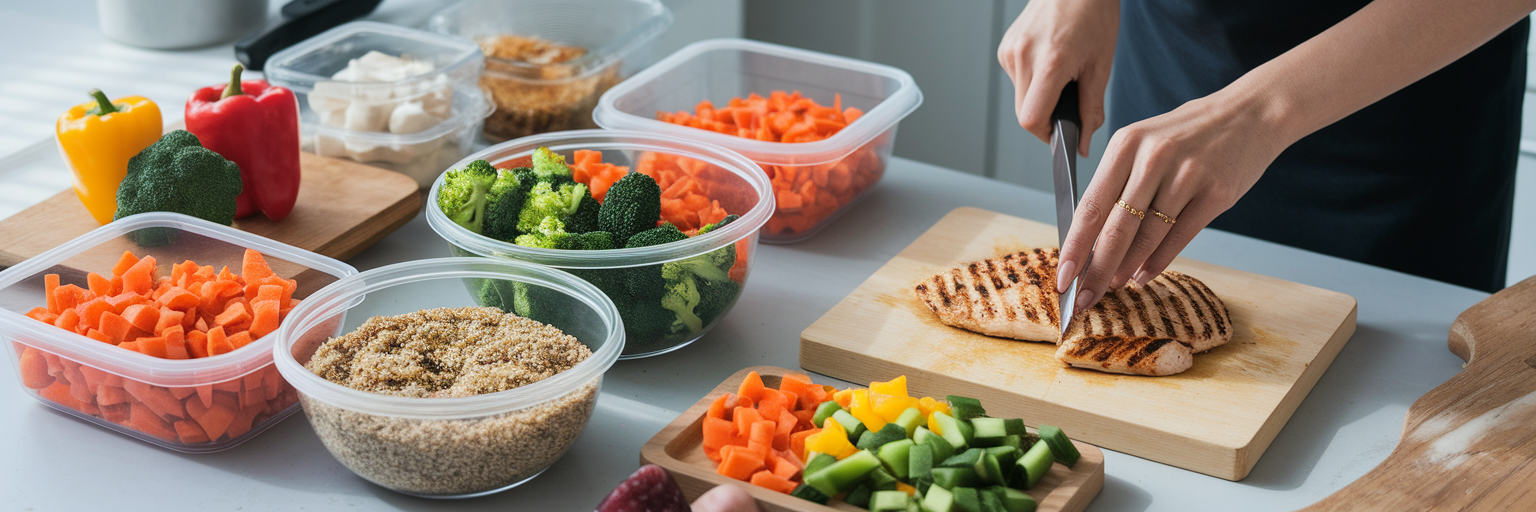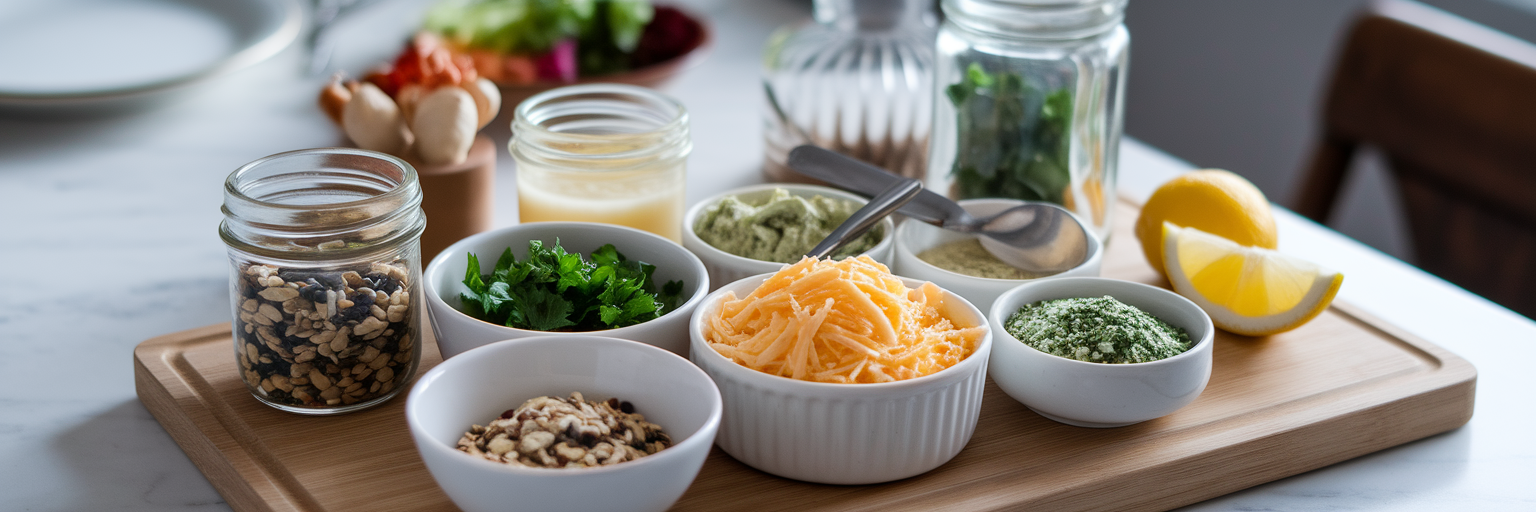Introduction
Many parents know the familiar 5 PM rush and the dreaded question, 'What's for dinner?' This daily challenge isn't just an inconvenience. Studies, like one from Cornell University, highlight the significant pressure mothers often feel regarding nightly meal preparation. This guide introduces family meal prep not as another chore, but as a strategic approach to reclaim your evenings, reduce stress, and ensure healthier eating for everyone.
Why Meal Prep Matters for Hectic Households
For busy American families, dedicating hours to meal prep might seem like adding another chore. Yet, the rewards are substantial. A focused weekend effort helps you save time cooking family meals during hectic weekdays. This reclaimed time means more moments for family, personal pursuits, or simply unwinding from demanding schedules.
Meal prepping also puts you in control of nutrition. You choose ingredients and portions, making it easier to serve more fruits, vegetables, and whole grains. This proactive step supports healthy meal prep kids will benefit from, reducing reliance on less wholesome convenience foods when time is scarce.
The financial perks are compelling too. Planning meals and shopping strategically, including buying some items in bulk for budget family meals US households often seek, cuts grocery bills. Using ingredients on hand, a core idea behind apps like Cook.aizdzj, minimizes food waste, saving money and aiding the environment.
Finally, consider the mental relief. Eliminating the daily 'what's for dinner?' dilemma reduces stress and decision fatigue. This predictability fosters calmer evenings and contributes to a more harmonious family atmosphere, genuinely improving overall well-being.
Laying the Foundation for Successful Meal Prep
With the benefits clear, let's move to the practical groundwork. Success in meal prep starts long before you turn on the stove. First, take stock of your family’s unique needs. Consider common US dietary requirements like gluten-free or dairy-free options, any nut allergies, and, of course, the preferences of picky eaters. Involving children in selecting meals from a curated list of family meal prep ideas can build enthusiasm and make them more likely to enjoy the food.
Next, choose your recipes wisely. Look for dishes that store and reheat well, are easily scalable for your family size, and ideally use overlapping ingredients to make your shopping more efficient. Don't feel you have to reinvent the wheel; digital tools and apps can be incredibly helpful for discovering suitable recipes. Many, like the options available when you Cook.aizdzj, can even suggest meals based on ingredients you already have.
Once recipes are chosen, create an organized shopping list. A detailed list, perhaps arranged by common US supermarket sections like produce, dairy, and pantry staples, saves time and helps prevent impulse buys. Always check your current inventory first to avoid purchasing duplicates.
Finally, having the right tools makes a huge difference. You don't need a professional kitchen, but a few essentials are key:
Quality Knives and Cutting Boards: A sharp chef’s knife and separate boards for raw meats and produce are fundamental.
Airtight Storage Containers: A mix of glass and BPA-free plastic containers in various sizes.
Large Mixing Bowls and Sheet Pans: For efficiently preparing ingredients in bulk.
Measuring Cups and Spoons: For recipe accuracy.
Mastering the Art of Batch Cooking and Prepping
Now that your foundation is set, it's time to get into the kitchen. This is where the active work of cooking and prepping happens, and efficiency is your best friend.
The Power of Batch Cooking Core Components
One smart strategy is batch cooking versatile base ingredients. Prepare large quantities of quinoa, roast chicken breasts, or make a big pot of chili. These core components can be repurposed into multiple quick weeknight dinners. For instance, cooked chicken might appear in salads, then tacos, then pasta. A versatile recipe like Grilled Mediterranean Chicken serves as an excellent base for several distinct meals.
Efficient Ingredient Preparation Techniques
Streamlining your prep work saves significant time. Culinary resources often emphasize that effective batch cooking relies on versatile ingredients usable across several meals. Consider these techniques:
The 'Mise en Place' Approach: Before you start cooking, wash, chop, and measure out all vegetables and other ingredients for your recipes at one time. This organized method keeps you focused.
Marinate Smartly: Prepare your marinades and get proteins soaking while you tackle other components. This allows flavors to develop without active cooking time.
Cook Grains and Legumes in Bulk: Prepare large batches of rice, lentils, or beans. These are staples that can be added to many different dishes.
Sauce and Dressing Prep: Whip up any sauces, dressings, or spice blends in advance. Stored properly, they'll be ready when you need them.
Smart Strategies for Assembling Meals
For assembly, you have options. Assemble complete individual meals in containers, ready to go. Or, store components separately—protein, veggies, grains—for mix-and-match flexibility. This is great for picky eaters who prefer building their own plates.
Incorporating No-Cook or Minimal-Cook Elements
Include items requiring little to no cooking. Pre-washed salad greens, fresh fruit, yogurt, overnight oats, or hard-boiled eggs simplify prep. These add freshness and variety with minimal effort.
Smart Storage and Reheating for Freshness and Safety
Proper storage after prepping is vital for freshness and food safety. Choose containers carefully: glass is durable and oven-safe, while BPA-free plastic is lightweight and often budget-friendly for US families. Airtight seals are essential for both to maintain quality.
Cool cooked foods quickly. USDA guidelines recommend reaching 40°F (4°C) or below within two hours to inhibit bacterial growth. Refrigerated meals generally last 3-4 days; frozen meals can keep for 2-3 months, though this varies by food type and proper storage.
Label every container with the dish name and date. This helps track inventory and supports a 'first in, first out' (FIFO) system in your fridge or freezer, minimizing waste and ensuring you know what you have.
When reheating, select the method (stovetop, oven, microwave) that best preserves texture and taste. Critically, ensure foods reach an internal temperature of 165°F (74°C) for safety before serving to your family.
| Food Type | Refrigerator Storage (Days) | Freezer Storage (Months) | Notes/Tips |
|---|---|---|---|
| Cooked Meat/Poultry | 3-4 days | 2-6 months | Cool completely before storing. |
| Cooked Fish | 1-2 days | 2-3 months | Store in the coldest part of the fridge. |
| Soups and Stews | 3-4 days | 2-3 months | Leave headspace for freezing. |
| Cooked Grains (rice, quinoa) | 3-5 days | 1-2 months | Spread on a tray to cool quickly. |
| Roasted Vegetables | 3-4 days | 2-3 months | May lose some texture upon thawing. |
Note: These are general guidelines based on USDA recommendations. Always use your judgment and check for signs of spoilage before consuming.
Engaging the Family and Adding Variety
To make meal prep a sustainable habit, engage the family and keep the menu interesting. Turning prep into a shared activity can make a difference. Here are age-appropriate ways children can contribute:
Toddlers (2-3 years): Washing produce (with supervision), tearing lettuce leaves.
Preschoolers (4-5 years): Stirring cold ingredients, sprinkling toppings, helping to set out containers.
School-Age Children (6-9 years): Measuring ingredients, reading simple recipe steps, grating cheese.
Older Children & Teens (10+ years): Chopping vegetables (with proper guidance), planning parts of meals, taking responsibility for specific prep tasks.
When children participate, they learn life skills and are often more enthusiastic about eating the meals.
To avoid meal prep boredom, actively introduce variety. Rotate recipes and try new cuisines. Exploring diverse family meal prep ideas, like a flavorful Thai Coconut Lentil Curry, brings new tastes. Different herbs, spices, or theme nights like 'Taco Tuesday' also keep meals fresh and engaging for everyone.
For picky eaters, flexibility is your friend. Offer strong sauces or new flavors on the side. Deconstructing meals, where components are served separately for everyone to build their own plate, is another effective tactic. A choice of healthy toppings can also make a difference.
A 'flavor station' can be a simple yet powerful tool. Set out a tray with condiments, fresh herbs, spices, nuts, seeds, and simple sauces. This allows family members to customize their meals, adding personal touches and boosting variety with minimal extra effort from you.
Troubleshooting Common Meal Prep Challenges
Even with solid plans, challenges can arise in busy parent meal planning.
If a long prep day feels impossible, break tasks into smaller, 30-minute slots. Focus on core components like grains or proteins to make it manageable.
When schedules shift, have versatile prepped items like cooked chicken ready. These can be quickly repurposed or frozen, ensuring you still save time cooking family meals.
To maintain motivation, find a prep buddy, enjoy music while you work, or focus on the rewards of less stress. Experts on meal prep burnout often suggest acknowledging your weekly efforts.
Technology can simplify planning. Apps like Cook.aizdzj. suggest recipes from your ingredients, reducing waste and mental load. The cook.aizdzj offers more tips.
Remember, meal prep is a skill. It gets easier and more rewarding with practice. Be patient, adapt, and find your family's rhythm.











